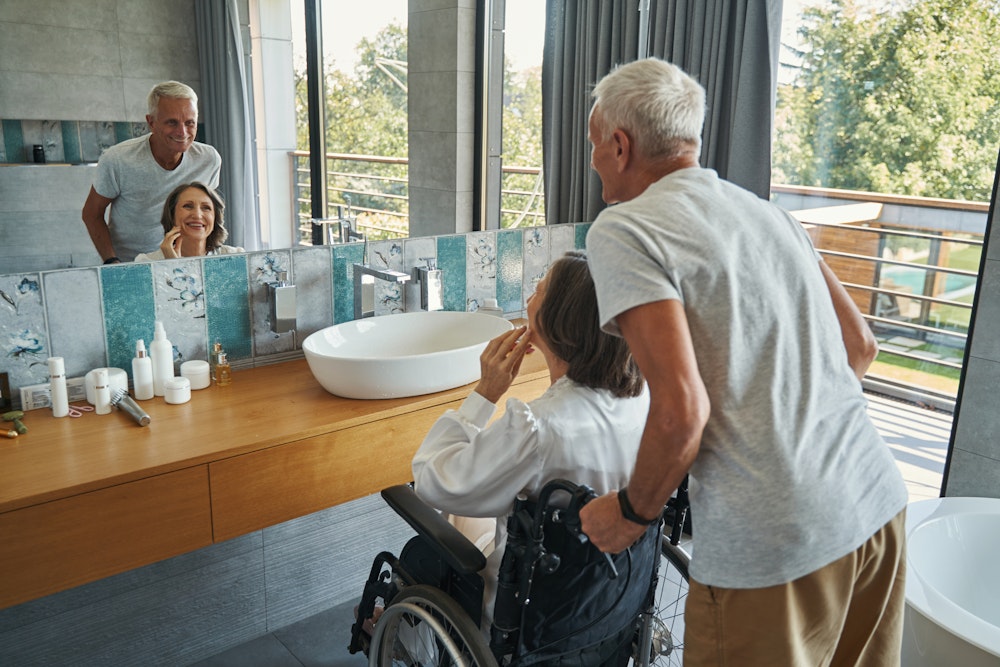Most bathroom designs, whether traditional or modern, are suited for the mobile, the young and the healthy. It is much more challenging to design a bathroom that can suit the needs of the elderly. But although it is challenging, with careful consideration of their needs and a bit of planning, it is not an impossible task to do.
The Size of the Bathroom
The first important factor to consider in bathroom planning for the elderly and invalid is the size. This is much more so if you are designing for an individual who is immobile, or is in a wheelchair. Try not to restrict the layout with the traditional shower boxes you see – increase the size as you can and customize it to ensure comfort and stability when use. Do not hesitate to build ledges or seats in strategic areas, or line the sides with grab handles or bars – prioritize safety and comfort while not compromising aesthetics.
Consider a No-Step Shower
Your shower area must be designed to ensure level entry. You can do some remodelling or get some of those flooring systems that can raise the floor level for water to properly drain inside the shower. This will allow people in wheelchairs to simply roll into or slide into the shower without difficulty. If you are faced with space constraints, you can even consider turning the entire bathroom into a wet room so they can bath with as much space possible, and with their caregiver or assistant with them.
Invest in a Walk-in Bathtub
Let’s face it: a conventional bath tub will impose too much pressure on an elderly, so much more for a handicapped. Consider investing in a walk-in bathtub. These tubs are equipped with access doors to allow users to walk into it, and not have to climb over on one side. There are a wide range of walk-in tubs available to suit every need. There are tall compact baths, while there are also conventional looking long length tubs. These tubs oftentimes feature swivel chair lifts or power seats that can lower or lift the user with ease. These tubs are significant investments as they can range from at least a thousand to a few thousand dollars. But they ensure utmost safety, convenience and comfort for the elderly and the disabled at home – and for you, as well.
The Toilets
Another important aspect that you should consider is the toilet. Modern disabled toilets now feature wall-hung toilets, which allow adjustment of the height of the pan based on individual needs. You can also consider getting toilet frames that allow additional support.
Fixtures, Vanities and Grab Rails
Inspect your fixtures and see whether they can be easily and intuitively used with ease by the senior or the handicapped in your home. Make sure to mount some grab rails in the toilet and in the bathtub to ensure they have every support they need. Never forget to put some more non-slip mats in place to make sure they don’t succumb to slips as they move around the bathroom.




